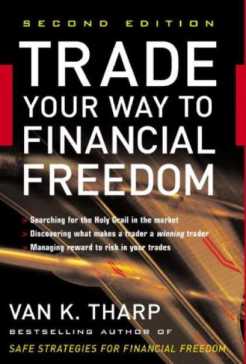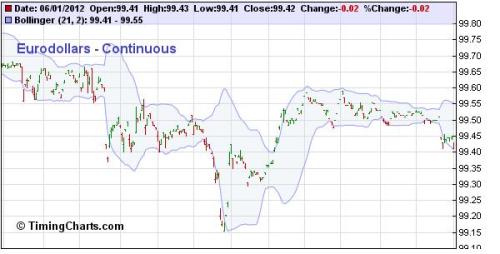 Final Journey: The Fate of the Jews in Nazi Europe by Martin Gilbert
Final Journey: The Fate of the Jews in Nazi Europe by Martin Gilbert
My rating: 4 of 5 stars
The Holocaust appalls and demands attention. It can be approached from many perspectives – looking at the suffering, understanding the perpetrators, philosophy and in studying the functioning of the Nazi German state and how it directed and implemented its racial policies. One of the dangers of exposure to this story is becoming immune to its horrors, through reading too much and turning it into a matter of historical analysis or a succession of statistics. Yet it seems obvious that this is necessary. We cannot forget it, and as perhaps the ultimate expression of the limits of human cruelty (indeed inhumanity) we cannot and should not resist the need to attempt to understand it.
Martin Gilbert as a Jew and Zionist had a deeper reason for interest in the Holocaust than most of us. In his work to record the events of the twentieth century he applied his gifts as an historian to recording the Nazi persecution and attempted destruction of European Jewry.
In his later book The Holocaust he records how in 1959 he travelled through Poland and for the first time visited the site of the Treblinka extermination camp. Although in subsequent years he engaged in his most well known work, the biography of Sir Winston Churchill, he gathered material about the holocaust, enough to eventually fill a room in his home.
The late 1970s seem to be an important time in the popularisation of remembrance of the holocaust, and it receiving a wider public discourse. Contrary to some accounts however, it had not been forgotten before then. The 1974 landmark series The World at War featured an episode entitled “Genocide” dealing with these events and a popular 1972 World War II partwork featured a chapter dealing with the death camps. Certainly from a US point of view however the TV miniseries Holocaust from 1978 played an important role. Historian Peter Novick in The Holocaust in American Life describes the series as “the most important moment in the entry of the Holocaust into general American consciousness”. Genocide, an award winning documentary from 1982 further exposed many international viewers to its horrors.
Martin Gilbert was one of the writers of that documentary, and perhaps in response to the TV miniseries released Final Journey: Holocaust: The Fate Of The Jews In Nazi Europe, his first book on the holocaust in 1979. Although he subsequently published a number of other books on the subject, including the magisterial The Holocaust, Final Journey still stands as a useful, relatively short (224 pages) overview.
Rather than providing a full narrative of the course of Nazi Germany’s repression and extermination, chapter by chapter Gilbert selects aspects of the treatment of the Jews and zooms in on them. The focus is always on the victims. He keeps his own voice in the background, and as in all his books concentrates on telling the facts rather than engaging in extensive interpretation. He provides lengthy first person narratives and lets the participants tell their stories in their own words.
We begin with the first deportations, and the creation of “Lublinland”, Eichmann’s first destination for the Jews of Germany. He describes the ghettos, the beginnings of the death camps and in chapter 3 an insight into an area I had not read much about, the repression of the Jews carried out almost independently by Romania.
For a brief overview of the Holocaust, I would highly recommend this book. Rather than skimming over the vast detail of the story, the selection of particular episodes and generosity with their description makes this history more powerful than its brevity might suggest. In addition, although the book does not spend a great deal of time on the perpetrators (thus perhaps not engaging with some of our natural questions about how we would have acted and why this could happen) I think the victims are the right place to begin. Further books such as Gilbert’s other works, and recent books by authors such as Lawrence Rees and David Ceserani provide a greater level of detail and full narrative. This 38 year old book still stands as a good starting point for beginning to study the final journey of six million tragic victims.



The great stalemate has continued this month in Europe, however the balance of power fascinatingly continues to adjust. Increasingly Germany stands alone as the voice of fiscal responsibility, with France now joining the pro-growth agenda that seeks fiscal easing, direct bailouts of Mediterranean banks and central intervention (from the ECB or one of the rescue funds) to lower Sovereign bond interest rates for the likes of Spain and Italy. Merkel plays a fascinating game of poker, with everyone wondering whether she will in the end blink to keep the Euro project alive a bit longer. It seems that this would spell doom with the German electorate, but perhaps they would accept even these major sacrifices to keep the illusion of the Euro alive. It seems that the cost Europe is prepared to tolerate to avoid having to accept that the Euro is a completely unrealistic and untenable project which completely ignores the political economy of Europe just keeps rising. There will come a time of reality – probably a collapse, but a slim chance of individual Sovereign nations bending over to the will of Brussels. It seems that this is still some distance away, and becoming more painful with each passing month.
Much the same is happening in the US and Britain as well. Continued massive experimental interventions by Central Banks have less and less effect. Eventually someone will realise that at some point significant contractions in the Western economies will occur (in either real or hopefully just nominal terms) to compensate for decades of totally fictitious expansion spawned by financial ‘innovation’ and debt creation by banks. This statement of common sense reality (to be counteracted only by incredible innovations in productivity or resource discoveries) has not yet sunk in, or at least no-one wants to accept it on their watch. It is symptomatic of a world where the leadership refuse to analyse the causes of the crisis and aggressively address them, accepting the tough steps required to normalise.
One of the areas where lessons have still not really been learnt is in dismantling much of what we call the ‘financial sector’. These institutions which played a massive role in the crisis have been soaked in money instead of kerosene over the past few years. They have also successfully shrugged off most attempts to regulate them, bleating that the big contributions they make to Western economies will be lost as they head offshore to some unknown location. In reality they have no-where to go, and much of their so-called financial innovation has in fact brought about the massive debt bubble, along with huge risk taking in the derivative markets. This month’s debacle with Barclay’s manipulation of the Libor interest rate, along with the ongoing haemmoraging at JP Morgan from the “Whale Trade” are just the latest iterations of what will be a continuing parade of dangerous incompetence. Until banks are slashed back to their basic economic functions again then we will wobble on towards the next crisis, and at best confidence will not return to the real economy. It is time for moral hazard to strike at these institutions, and for them to be cleaned out by downsizing or nationalisation/liquidation.
The month has been a successful one for our trading program. I have tightened up slightly on our risk taking with some outlier trades being excluded that were slightly over the % equity limit which I would have taken before. In Trendfollowing the best returns usually come from periods of reduced volatility where a larger position can be taken. The reward to risk ratio in those times where volatility is high, resulting in trades right at the edge or slightly beyond the risk envelope is small. Although it has resulted in missing the short move in Crude, it has also prevented losses in other markets approaching or exceeding 1R.
Excessive volatility has resulted in us missing this down move in Crude.
June saw two trades closed. A 10 Year Notes position from April closed with a 1.5R profit. It would have been nice to see more profit here but with overhead resistance and the constant risk of a significant adverse move with these schizophrenic markets it was a good result. Even better was the short Euro trade from early May which closed with a 2.6R profit. A lot of large traders and hedge funds sound like they have really struggled with the Euro as the ‘obvious’ short trade just hasn’t worked a lot of the time, especially with the massive recovery from January onwards. Trying to second guess what will happen is impossible – there are so many contrary comments and theories. I have heard targets of 1.15 regularly mentioned, although one bank has a target of 1.40 by the end of the year! The usual stories of ‘one sided’ trades and ‘oversold’ conditions also always rear their heads in times of crisis, quietly forgotten as the rate continues to fall, until the market reverses and the pundits point to their timely analysis! It seems the big picture of the Interest rate differential, various forms of Quantitative Easing and perhaps capital repatriation keep resulting in surprising changes in the trend. Our programme has traded four times over the past six months (1.93R, -1R, -.98R, 2.6R) producing reasonable results given the substantial whipsaws at times. Although the middle two trades were disappointing, our Trendfollowing methodology did allow us to pull out reasonable profits on the other trades, sticking with them when they looked improbable, and getting out when conditions looked most dire and most commentators believed we were just experiencing a brief relief rally.
It is difficult to foresee what the next month may bring. I hope for some consolidation in Crude so that if the downtrend continues we can participate. We have open positions in the Eurodollar (long) and Yen (long USD/JPY) which at the moment don’t look like going anywhere fast – you never know where the trends will come from though!
Leave a Comment
Posted in Uncategorized | Tags: bank regulation, barclays libor manipulation, central intervention, Crude trade, Euro, Euro crisis, euro project, financial innovation, moral hazard, trading commentary, trading performance, trendfollowing, whale trade